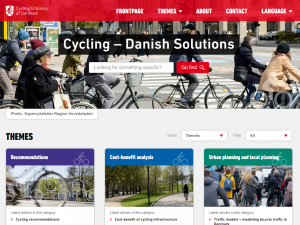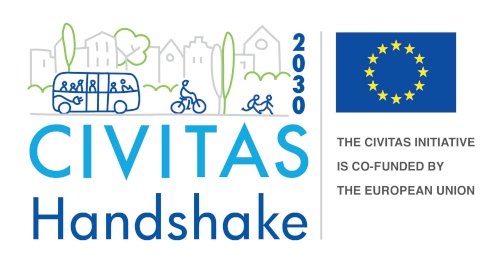Over recent months, many new publications have launched aimed at helping practitioners improve the quality, inclusivity and aspiration of the cycling solutions they develop and apply. In this need-to-know guide, we profile some of the most important. You can also find all documents below (and more) in our resources library.
Wheels for Well-being – A Guide to Inclusive Cycling
This updated guide presents advice on removing barriers to disabled people’s access to cycling.
The Guide sets out the principles of inclusive cycling and features real-life case studies, technical recommendations and policy suggestions.
In addition to outlining principles of inclusive cycling and the types of cycles used by disabled cyclists, the Guide covers four main themes. It looks at:
- cycle infrastructure;
- cycling facilities;
- cycle networks; and,
- recognition and awareness of cycling by disabled people.
“Many disabled people don’t get to enjoy the amazing benefits of cycling because of barriers that are put in their way; be they physical, attitudinal or otherwise. However, we know that significant numbers of disabled people do already cycle and that many more could do so given the right conditions.” Isabelle Clement, Director of Wheels for Wellbeing
Guidance for Cycling Projects in the EU
The European Commission recognises the diversity of cycling solutions applied across Europe, but also recognises that advanced guidance and techniques are not mainstreamed across all countries or cities in the European Union.
The new Guidance for Cycling Projects in the EU is a series of online resources that provides a starting point to addressing this. It provides advice and examples across numerous areas of cycling project design and delivery:
- Overview of guidance
- Cycling policy background
- Specific challenges that cities face and how cycling helps
- Planning for cycling in cities
- Cycling infrastructure quality design guidance
- Cycling measures
- Summary of successful implementation of cycling measures
- Policy evaluation and development tools
- EU-funded cycle projects
The Cycle Highway Manual
The Cycle Highway Manual aims to help professionals that deal with cycle highway planning, design, construction, selling, maintenance, and monitoring and evaluation.
It aims to bring the value of an international perspective by identifying common trends, points where different guidelines diverge to better adapt to national or regional context, as well as some as yet uncharted areas. Practical experiences with diverse standards and non-standard solutions are discussed - both inspirational best practices and mistakes to avoid.
Chapters also deal with promoting cycling to users, synergies with public transport, integration in spatial planning, financing options, conditions for optimal rollout, and monitoring. The document is built around the structure shown on the right.
Danish Cycling Solutions
At Velo-city 2019, the Union Cycliste Internationale (UCI) and the Cycling Embassy of Denmark (CED) launched a new online knowledge sharing platform for cycling.
The Cycling Solutions platform has launched with an initial collection of roughly 100 articles presented under 22 different themes. All articles were written by Danish and international cycling experts. The website covers a wide variety of topics, including cost-benefit analysis of bicycle traffic, children’s cycling, ITS solutions for cyclists, bicycle parking facilities, bicycle tourism, alongside the planning and implementation of safe cycling infrastructure.
It complements the Handshake website with a specific focus on practice in Denmark, and draws heavily on the innovative work of Handshake’s Cycling Capital Copenhagen.
Future Publications
Keep an eye on our news and social media for updates on the following additional sets of guidance and inspiration. These include:
Guidelines for Developing and Implementing a Sustainable Urban Mobility Plan (SUMP)
A draft of the second edition of the EU Guidelines for Developing and Implementing a Sustainable Urban Mobility Plan were opened for feedback on June-July 2019. Part of this is a cycling-focused practitioner briefing - “Supporting and encouraging cycling in sustainable urban mobility planning” (currently in draft form).
The final version will be launched at the CIVITAS Forum 2019 in Graz.
Pan-European Master Plan for Cycling Promotion
The final draft of the Pan-European Master Plan for Cycling Promotion will be put to approval on 22-24 October 2019.
The advanced draft available from the ECF website contains the following objectives to be met by 2030:
- Double cycling in the region and increase it in every country;
- Develop and implement national cycling policies, supported by national cycling plans, in the member States of the UNECE and the WHO Regional Office for Europe;
- Increase the safety of cyclists in the ECE and WHO member States and halve the number of fatalities and serious injuries of cyclists per kilometre cycled annually;
- Integrate cycling into health policies;
- Integrate cycling into land use, urban and regional planning, including for infrastructure.
All of these obejctives are complementary to the work Handshake is undertaking.
The development of the Master Plan has been led by the Transport, Health, Environment Pan-European Programme (“THE PEP”), a joint initiative of the World Health Organisation (WHO) and United Nations Economic Commission for Europe (UNECE).
Image (Source)





